Why Nonprofits Should Ditch Paper Forms and Emails for Text RSVPs
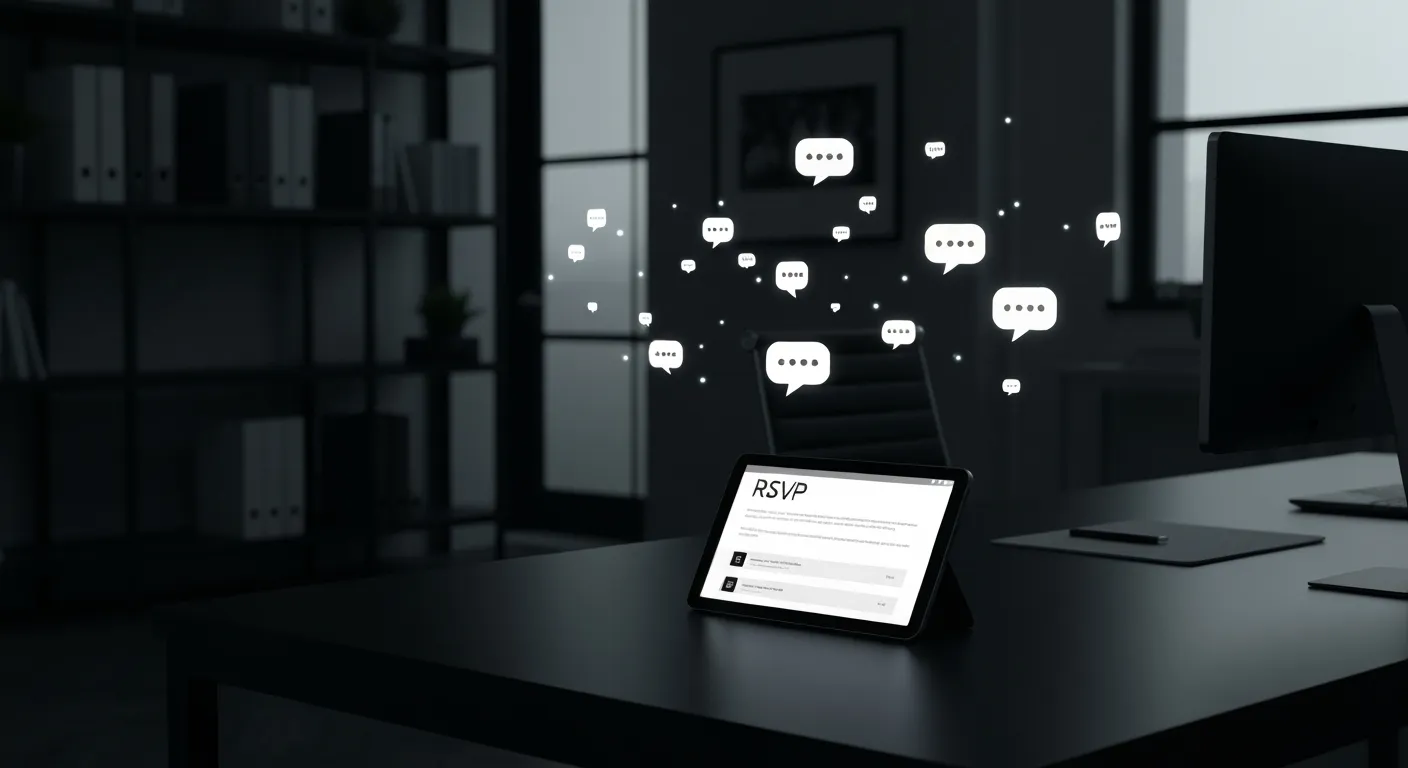
Embracing Simplicity and Speed: The Shift Towards Text RSVPs
Nonprofits face unique challenges in managing event RSVPs efficiently while maintaining personal connections with their supporters. Traditional methods involving paper forms and emails often fall short in an era demanding immediacy, accuracy, and ease of communication. This article explores why nonprofits should transition from these outdated approaches to text message RSVPs, highlighting the benefits of this digital transformation in event management that drives engagement, attendance, and operational effectiveness.
Limitations of Traditional RSVP Methods in Nonprofit Event Management

What challenges do paper forms and spreadsheets pose for RSVP management?
Managing RSVPs with paper forms and spreadsheets often leads to numerous problems. These methods are prone to errors, such as incorrect data entry or lost information, which can cause confusion when organizing events. Spreadsheets, while useful for basic tracking, can be difficult to update collaboratively, especially when multiple staff or volunteers are involved.
Paper RSVP cards are easy to overlook or forget, and collecting them can be time-consuming. Additionally, they make it harder to make timely updates or communicate changes like weather delays or schedule adjustments. These limitations make traditional approaches less efficient for nonprofits that handle multiple or large-scale events.
What issues are associated with email RSVPs, and why is their effectiveness declining?
Email RSVP responses have been a popular choice due to their convenience; however, their effectiveness has been decreasing. Nonprofits report lower response rates and higher chances of responses being overlooked or ending up in spam folders. Additionally, emails lack the automation and tracking features needed to manage responses effectively.
Emails can also be impersonal, making it harder to foster a connection with potential donors or attendees. They require manual follow-up, which increases administrative work. As email inboxes become more crowded, important invitation messages can get lost or ignored, reducing overall engagement.
Is there a need for better tools in nonprofit event coordination?
Absolutely. Nonprofits increasingly need sophisticated tools that simplify RSVP management, improve communication, and streamline data collection. Digital platforms offer automated reminders, real-time tracking, customizable questions, and seamless integration with event databases. Such tools reduce manual errors and enhance responsiveness.
Platforms like online RSVP systems and event management software also allow nonprofits to reach international audiences effortlessly, track responses centrally, and reduce paper waste—all while providing a more engaging and modern experience for guests.
Summary Table:
| Method | Pros | Cons | Suitability | Alternatives |
|---|---|---|---|---|
| Paper Forms | Tactile, personal keepsake | Slow, prone to loss/errors | Small, local events | Digital RSVPs with printable options |
| Spreadsheets | Simple to update | Error-prone, collaboration issues | Small to medium events | Online RSVP platforms |
| Email RSVPs | Convenient, widely used | Low response rates, lack of automation | Ongoing communication | Automated event management tools |
By shifting towards digital solutions, nonprofits can greatly enhance their event planning process, ensuring better coordination, higher response rates, and a more professional image.
Why Text Messaging Outperforms Emails and Paper for RSVPs
Why should nonprofits adopt text message RSVPs for their events?
Nonprofits benefit greatly from using text messaging for event RSVPs due to its high engagement potential. Unlike emails and paper invitations, SMS boasts an open rate of over 98%, with most messages read within three minutes. This immediacy means organizations can quickly secure responses, send reminders, and update supporters about event details.
With over half of recipients replying promptly, text messaging enables real-time confirmation and efficient communication. This rapid response capability is especially crucial for last-minute changes or urgent notifications.
Cost-wise, texting is highly scalable and more affordable than printing paper invitations or managing extensive email campaigns. It allows nonprofits to reach a broad audience without significant expenses, making it suitable for large or multiple events.
Furthermore, SMS facilitates personalized outreach via segmentation, allowing tailored messages that strengthen supporter relationships. It also simplifies gathering feedback through quick surveys embedded in messages.
Overall, using text messaging for RSVPs streamlines registration, boosts turnout, and enhances engagement, positioning nonprofits for more effective and responsive event management.
Enhancing Supporter Engagement and Attendance with Text-Based RSVPs
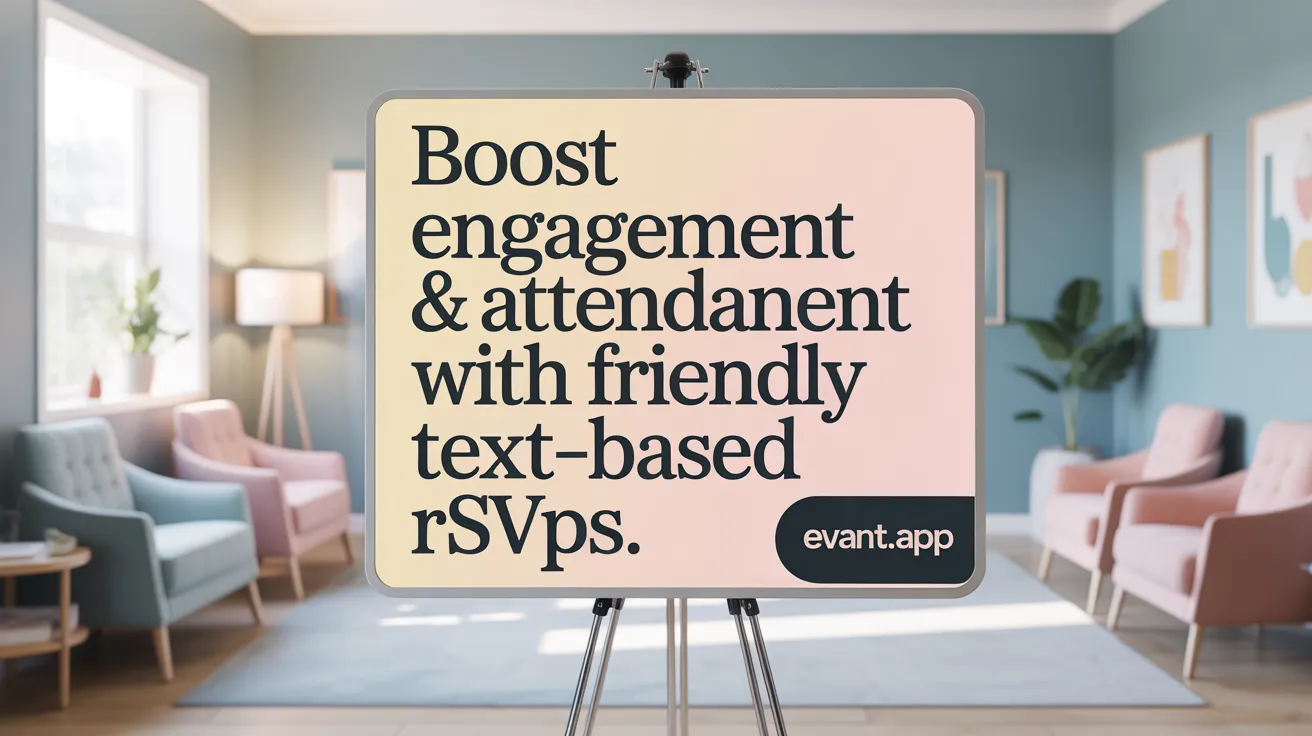
How can text-based RSVPs improve engagement and attendance at nonprofit events?
Text-based RSVPs are transforming the way nonprofits communicate with supporters and manage event attendance. These messages are quick to deliver, easy to respond to, and boast an impressive 99% open rate, with most being read within three minutes. This immediacy ensures supporters receive important event details and reminders just when they need them.
Automating personalized messages through platforms like Evant allows organizers to send tailored reminders, updates, and follow-ups. These automations not only save time but also dramatically increase RSVP responses by reducing forgetfulness and last-minute dropouts. Supporters are more likely to confirm their attendance when they receive timely, relevant reminders.
Segmenting audiences beforehand helps organizations send targeted messages suited to different supporter groups—be it donors, volunteers, or past attendees. This relevance makes the communication more persuasive, fostering a sense of personal connection and encouraging higher engagement.
Furthermore, features such as text-to-RSVP or text-to-donate simplify the process of registering or giving donations directly via mobile messages. This convenience encourages immediate action, boosting registration rates and donations.
Using text messaging keeps supporters engaged and informed, strengthens relationships, and increases overall attendance. Its speed, reach, and personalization capabilities make it an indispensable tool for nonprofit event success.
Streamlining Efficiency and Accuracy in Event Registration with Text Messaging
How do text messaging systems enhance efficiency and effectiveness in nonprofit event registration?
Text messaging platforms, such as SMS, have transformed how nonprofits manage event registrations. They enable immediate, automated responses that confirm attendance, send reminders, and provide updates without the need for manual follow-up. This automation not only saves time but also ensures that information reaches supporters promptly.
With a 98% open rate and most messages read within three minutes, SMS guarantees urgent notifications—like last-minute schedule changes or emergency alerts—get to attendees quickly. This immediacy reduces confusion and helps organizers respond effectively.
Personalized and segmented messages make communication more relevant, encouraging higher participation and fostering trust among supporters. The opt-in process ensures compliance with privacy regulations, further strengthening supporter relationships.
Beyond simple notifications, SMS can integrate with donation platforms and volunteer management tools. This connection simplifies fundraising efforts and streamlines organizational workflows.
In summary, text messaging improves the speed, accuracy, and engagement of nonprofit event communication. It ensures messages are seen quickly, responses are tracked efficiently, and support for the event is maximized, resulting in smoother operations and more successful outcomes.
The Role of Digital Transformation in Modern Nonprofit Event Management
How does digital transformation enhance nonprofit event management?
Digital transformation has revolutionized how nonprofits plan and execute events. By incorporating online ticketing systems, automated registration processes, and data analytics tools, organizations can streamline many administrative tasks that traditionally required significant manual effort.
Online ticketing platforms allow organizers to sell tickets digitally, making it easier for attendees to purchase and for organizers to track sales in real time. Automated registration systems simplify the check-in process and reduce staff workload, while data analytics helps craft better insights into attendee behavior, preferences, and engagement levels.
This technological shift also supports the integration of giving platforms and donor portals. These tools not only facilitate donations but also provide features like impact tracking and social media sharing, which enhance transparency and foster deeper donor engagement.
Furthermore, automation reduces the need for repetitive communication tasks such as sending reminders or follow-up emails. This enables staff to focus on strategic activities, like creating memorable event experiences and strengthening relationships with donors.
Many nonprofits are also adopting comprehensive dashboards powered by data science tools like Power BI. These dashboards generate real-time insights into operational efficiency, donor contributions, and event impact, guiding better decision-making.
Overall, this digital shift helps nonprofits manage increased service demands, control costs, and adapt quickly to changing circumstances, elevating the effectiveness and reach of their events and broader missions.
| Technology Used | Functionality | Benefits |
|---|---|---|
| Online ticketing | Ticket sales | Easier access for attendees, real-time tracking |
| Automated registration | Attendee check-in | Reduced staff workload, faster entry |
| Data analytics tools | Operational insights | Data-driven decisions, improved planning |
| Giving platforms & portals | Donation processing | Increased transparency, donor engagement |
| Dashboards like Power BI | Real-time data visualization | Strategic insights, better resource allocation |
This digital approach not only facilitates smoother event execution but also significantly improves stakeholder engagement and organizational adaptability.
Overcoming the Drawbacks of Traditional Invitations with Digital and Text Solutions
How do digital RSVP methods compare to traditional paper and email approaches for nonprofits?
Digital RSVP methods, such as online forms and text message responses,.offer several advantages over traditional paper and email approaches. They allow for immediate responses, reducing waiting times and eliminating postal delays. Automated reminders can be sent effortlessly, improving response rates and ensuring guests confirm their attendance in time.
These platforms integrate seamlessly with event management tools, making data collection and tracking straightforward and reducing manual errors. Customizable options are available, such as gathering meal preferences, dietary restrictions, and other specific information, all within a single digital interface.
Traditional paper RSVPs, although valued as personal keepsakes, are slower to process, more expensive due to printing and mailing costs, and susceptible to being misplaced or ignored. They also require manual data entry, which increases the likelihood of mistakes.
By combining digital methods with traditional approaches, nonprofits can accommodate different guest preferences, offering a personal touch through mailed invitations while benefiting from the efficiency of online RSVPs. This hybrid approach ensures broader accessibility, convenience, and streamlined event management.
In summary, digital RSVPs are becoming increasingly vital for nonprofits hosting frequent or large-scale events. They simplify communication, enhance data accuracy, and reduce costs—making them an essential tool for effective event planning in today's digital age.
Maximizing Fundraising Potential by Combining SMS and Email Campaigns
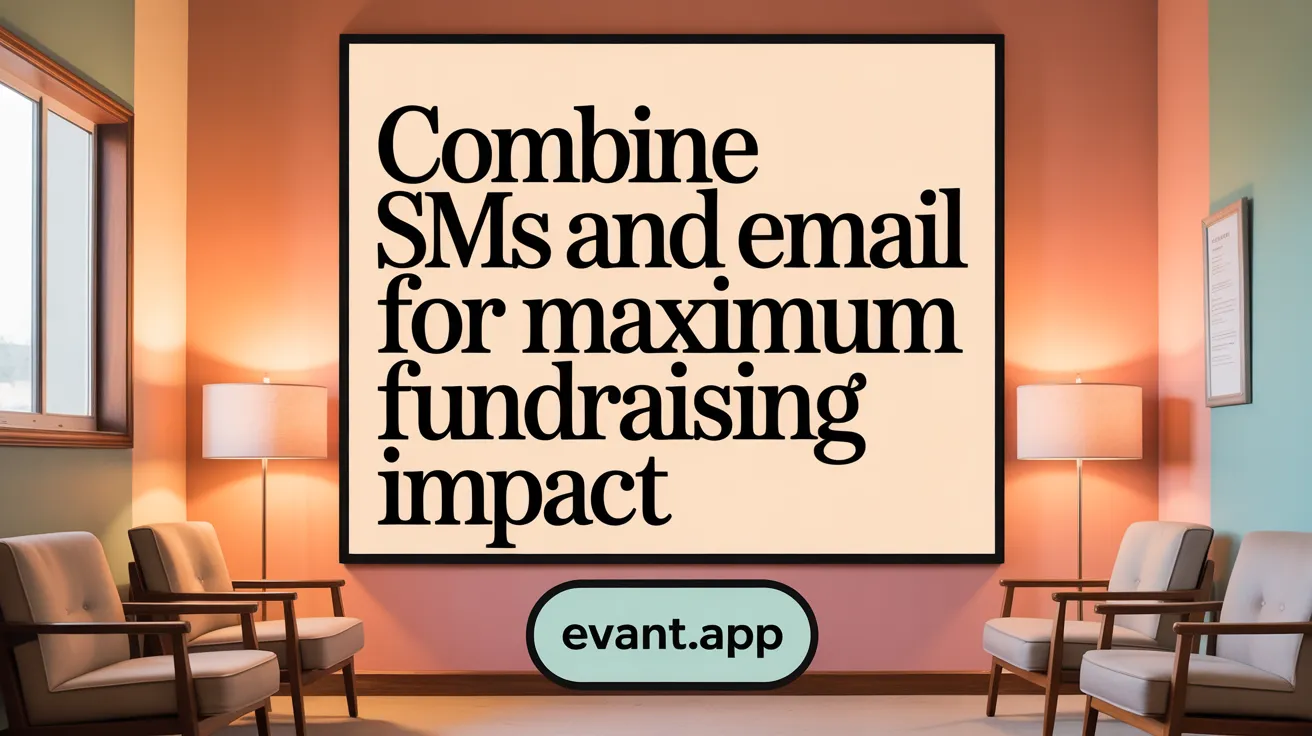
Why should nonprofits consider switching from paper forms and emails to text message RSVPs?
Electronic communication, especially through text messaging, offers numerous advantages over traditional methods like paper RSVP cards and email invitations. SMS enables direct, quick, and personal interaction with supporters, making it easier to secure immediate responses and confirmations.
Over 98% of text messages are opened within minutes, significantly surpassing email open rates, which tend to be lower and slower. This immediacy helps nonprofits respond to supporter inquiries promptly, send reminders, and mobilize attendance at events efficiently.
Cost is another critical factor. Sending SMS messages generally costs only a few cents each, making it a highly affordable option for organizations with a large supporter base. The ability to scale messages instantly allows nonprofits to reach many supporters simultaneously, which is ideal for last-minute updates or urgent calls to action.
Furthermore, SMS streamlines administrative tasks. Automated responses, supporter segmentation, and data collection become simpler and more efficient. This reduction in manual follow-up saves time and reduces labor costs.
Overall, adopting text messaging for RSVPs enhances engagement, accelerates response times, and improves operational efficiency. It helps build stronger supporter relationships and increases the likelihood of successful fundraising campaigns.
How do combined email and SMS campaigns increase donor engagement and revenue?
Using both channels leverages the strengths of each. Email provides a broad, multimedia-rich platform ideal for more detailed communication, while SMS delivers quick, direct messages that catch attention immediately.
Combining these strategies ensures messages reach supporters across different preferences and devices, increasing the chances of engagement. For example, an email can provide comprehensive event details, while an SMS can serve as a reminder just hours before.
Studies show that campaigns integrating email and mobile messaging see significantly higher response and donation rates. Internal data suggests that combining strategies can boost revenue per supporter by 25% to 50%. This synergy maximizes outreach effectiveness, enhances donor experience, and fosters ongoing supporter involvement.
How does multimedia content in texts help connect with supporters?
Including multimedia elements like images, GIFs, and videos in SMS messages (via MMS) greatly increases engagement. Videos can be played directly within messages, making communication more vivid and emotionally impactful.
These elements help supporters better understand the cause, feel more connected to the campaign, and are more likely to act. For instance, a short video showcasing the impact of their donation or an image emphasizing the event atmosphere can motivate recipients to respond positively.
On a practical level, multimedia content also helps break through the clutter of plain text messages, capturing attention quickly. When combined with concise, compelling messages, it creates a more memorable experience for supporters.
Supporting Data Summary
| Channel | Open Rate | Response Time | Engagement Impact | Cost |
|---|---|---|---|---|
| Text Messaging | 99% | Within 3 min | Higher click-through, emotional connection | Few cents per message |
| 75% (first 24 hrs) | within 24 hrs | Broader, multimedia capability | Variable, often higher |
Integrating these channels creates a comprehensive, effective outreach system that maximizes supporter commitment and funding success.
Practical Tips for Nonprofits to Switch to Text RSVP Systems
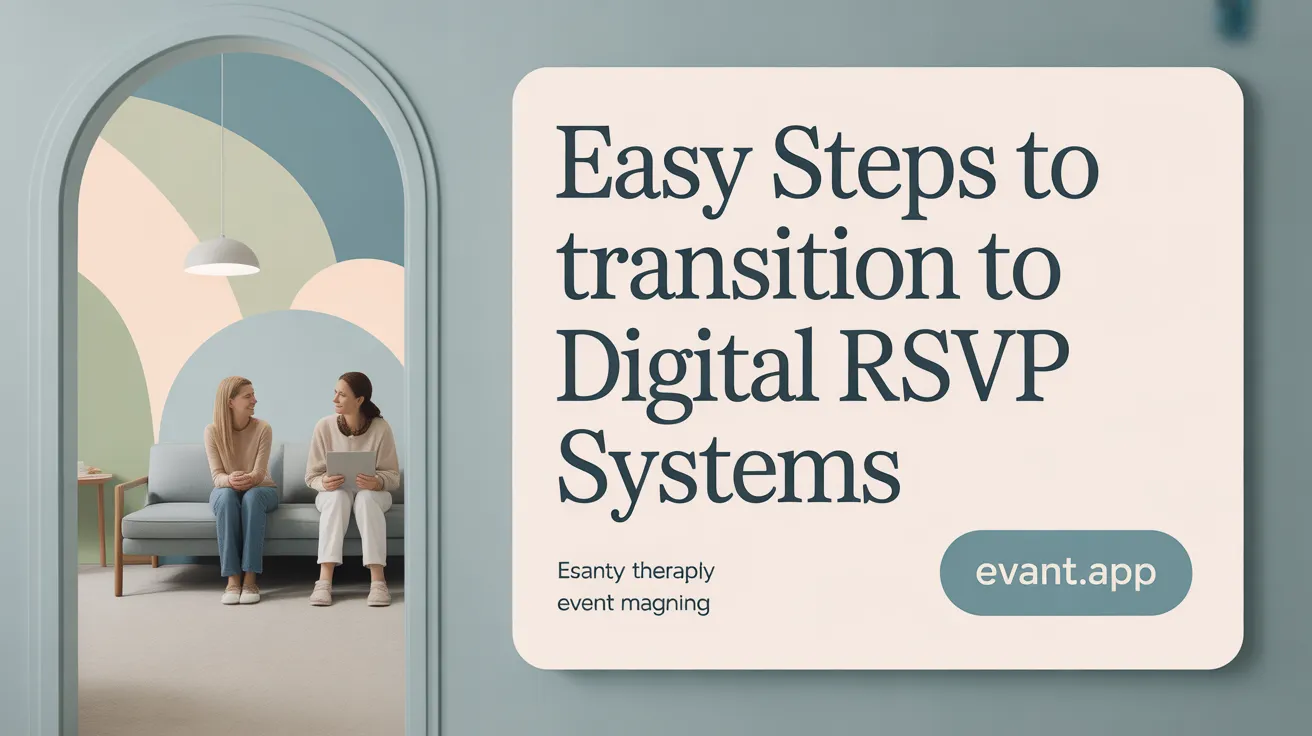
Choosing dedicated event management tools with texting features
Nonprofits hosting multiple events can greatly benefit from specialized event management tools that include built-in SMS capabilities. Platforms like Luma not only handle RSVP management and attendee updates but also support waitlists, custom questions, and automated email communications. These tools streamline planning by synchronizing guest responses and facilitating real-time updates, making it easier to manage large or recurring events.
Incorporating multimedia in text messages to boost engagement
To captivate your audience, incorporate multimedia elements like images, videos, and GIFs within your text messages. MMS allows these rich media formats to be included directly within the message, which can evoke emotional responses and foster a stronger connection with recipients. Short messages, typically 1-6 sentences, combined with multimedia content can drive higher engagement and increase the likelihood of response or action.
Ensuring opt-in compliance and audience segmentation
Respecting privacy and ensuring consent are crucial when adopting SMS communication. Always obtain clear opt-in from your audience before sending texts and provide easy options for opting out. Segmenting your contacts based on demographics or engagement levels allows for tailored messaging, which improves response rates and overall effectiveness of your communication strategy.
| Step | Action | Explanation |
|---|---|---|
| 1 | Use secure, compliant platforms | Choose tools that adhere to privacy regulations. |
| 2 | Gather explicit consent | Make sure contacts agree to receive SMS messages. |
| 3 | Segment your audience | Group contacts for targeted messaging. |
| 4 | Personalize messages | Use recipient data to customize texts. |
| 5 | Track responses and metrics | Measure engagement to refine strategies. |
By following these practices, nonprofits can efficiently transition to a text-based RSVP system that is engaging, respectful, and effective in maximizing event participation.
The Future is Text: Embracing Modern RSVP Communication
As nonprofits seek to deepen connections with supporters while managing events more efficiently, shifting from paper forms and traditional emails to text message RSVPs is a strategic imperative. This transition not only brings immediate benefits in engagement and attendance but also streamlines administrative workflows, reduces costs, and aligns with broader digital transformation goals. By adopting SMS RSVP systems, nonprofits position themselves to respond swiftly to their communities' needs, harness data-driven insights, and foster lasting relationships. Embracing this change is essential for nonprofits looking to innovate event outreach and maximize impact in an increasingly connected world.
References
- Don't Use Forms for Event RSVPs - Mariatta
- 5 Reasons to Send a Plain Text Email - Nonprofit Fundraising
- Why You Should Still Send Out Paper Invitations - Copycat Printing
- 5 Reasons Why Texting Complements Email - Virtuous Software
- Online wedding invitations: why you should use digital invites like ...
- 9 Reasons Why You Should Opt For Online RSVPs - WedSites Blog
- What You Need to Know About Text Messaging for Nonprofits
Related Blogs
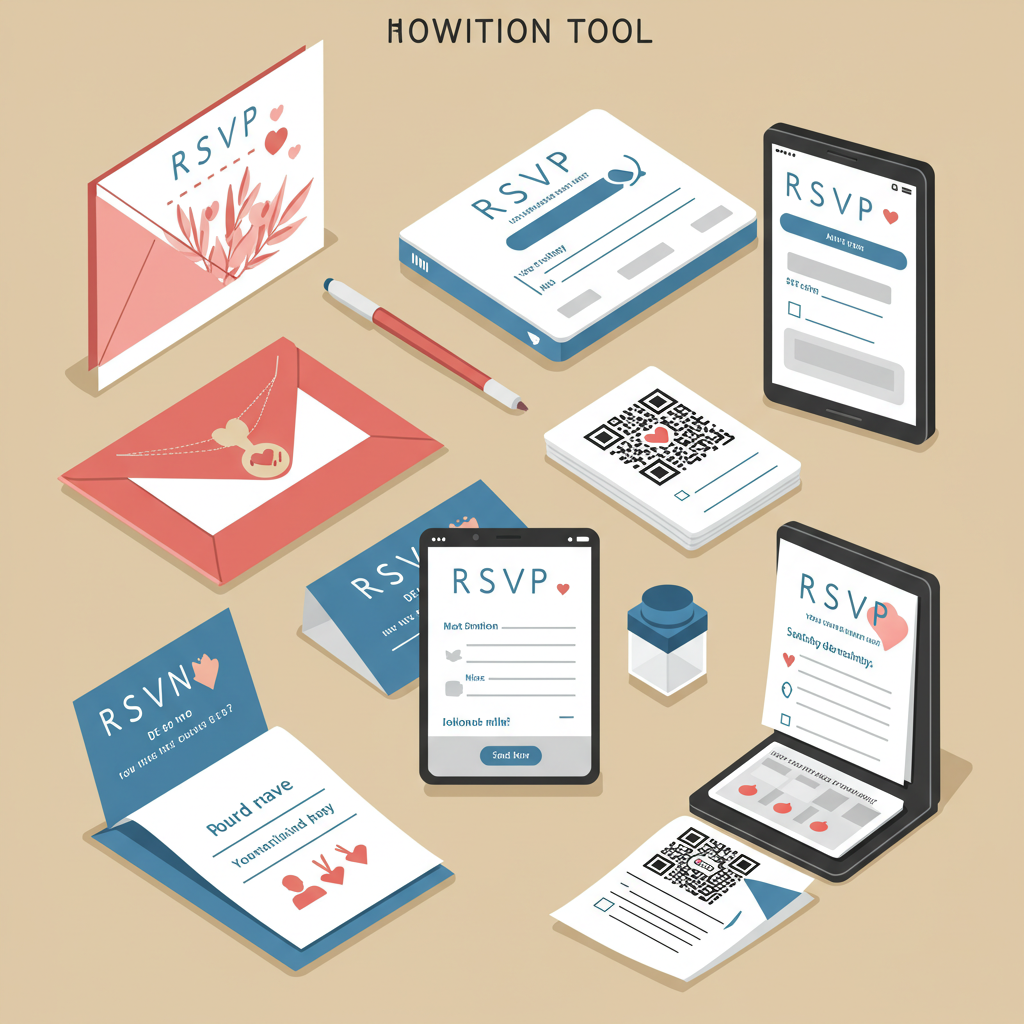

RSVP Tools: Best Options, Google RSVP Limitations & Why Text Wins
Michael PedoeemExplore the best RSVP tools, Google RSVP’s limitations, and why text RSVP is the most efficient for event planning with instant confirmations and reminders.


My School SMS: Bridging the Gap between Schools, Parents, and Students
Michael PedoeemMy School SMS - What's it all about


Ready to transform your community








